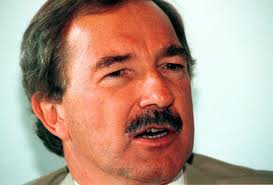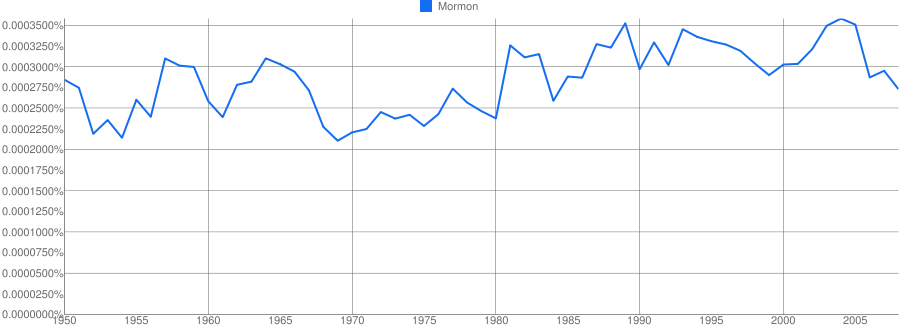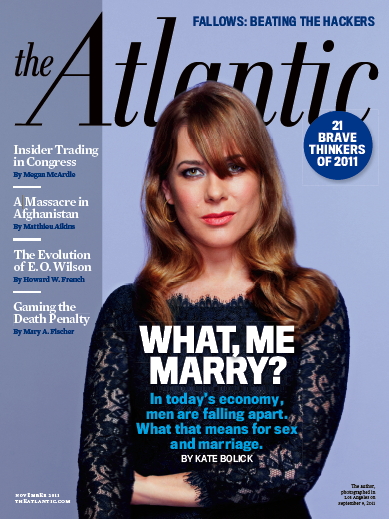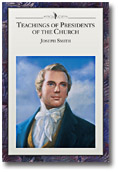-
•
•
29 responses
(This is the third part in a series about my vision for a community. Here’s Part One and Part Two.) Time to look at distribution of labor, education and job skills, and self-determination. … Like I said previously, I’m targeting a $1,000-per-month lifestyle that covers food and housing for a family. In practice, the way I imagine implementing it is with a three-tier system: Tier 1: $2,000/month Tier 2: $1,000/month + part-time community maintenance Tier 3: $0/month + full-time community employment Each tier is designed to meet a different individual need. Tier 1 is for people who have money and/or… Read More
-
•
•
16 responses

Forbes’ annual look at the 400 richest Americans was released last month, so I thought I would again take a look at the Mormons on the list, and was surprised to find a different Mormon on top of the list. Aaron B. claimed last May that Steven Udvar-Házy is LDS, and I have been able to verify that at least his wife is from an LDS family. Udvar-Házy now tops the Mormons on the Forbes list. Read More
-
•
•

1 Timothy 3 3:15-16: How is the Church “the pillar and ground of truth”? What metaphor is Paul using? How does that metaphor help us understand what the Church does? What does he mean when he speaks of “the house of God”? Does he mean the church as a whole or individual congregations? What does Paul mean when he says “without controversy”? To what is Paul referring with the word mystery? Why is the word mystery an appropriate reference for that case? (Verse 16 seems to be another quotation from a hymn.) What is Paul talking about when he says… Read More
-
•
•

There is even more to cover than usual in this lesson. The result is 12 pages of study material. Because it usually helps to understand the context in which the verses one studies occur, I will supply some background information about each book, as well as an outline of the text of each. Then I will follow those with a few study questions. Remember as you read these materials that they are to help you study the letters assigned for the lesson. They are not suggestions for teaching the lesson. Of course a person could use these to help her… Read More
-
•
•
32 responses
Given that my wife is female and her heavy and varied involvement with food (cooking school, PhD in Food Studies (scroll to bottom), sometimes-food-blog, etc.), most people assume she’s doing all the cooking at our house. Not so. In fact, even before we were married, I did so much of it that at our sealing we laughed when Grampa said (tweaking us both in turn), “Now Ben, when you come home, and C. has burned the roast…” We maintain a strict division of labor in the kitchen. She does all the baking, and most of the French and American food.… Read More
-
•
•
21 responses
No, today isn’t a national holiday. It’s not any particular religious festival. We’re more than a week away from Halloween, a month from Thanksgiving, and a couple months from Christmas. The only reason you have today off (assuming you have today off) is because today is Saturday. And yet . . . On October 22, 1986, President Ronald Reagan signed into law the Tax Reform Act of 1986, a bipartisan bill. That law, signed 25 years ago today, was the last fundamental tax reform in which the U.S. has engaged. Among other things, it broadened the tax base, reduced the… Read More
-
•
•
36 responses

In my previous post about the principles that would govern my ideal community (affordability, space, distribution of labor, technology, education and job skills, and self-determination), several of you made comments and asked questions about how those principles might work in practice. Here are my thoughts. … Affordability Across the street from my workplace is a Lowe’s (Lowe’s is a hardware/supplies store, for those of you that aren’t familiar with it). The Lowe’s parking lot has a bunch of sheds. Being the odd kind of guy I am, I took a tour of the sheds during lunch one day, and discovered that… Read More
-
•
•
3 responses
Joseph Spencer is indispensable. He is the “not-thoughtless” and the “never-glosses-over.” Read More
-
•
•
15 responses
Not being able to apologize may be worse than admitting you are wrong. Read More
-
•
•
29 responses

I just started reading the recently published Tri-Faith America: How Catholics and Jews Held Postwar America to Its Protestant Promise, by Kevin M. Schultz (OUP, 2011). With Mitt Romney’s Mormon-ness continuing to be an oddly fascinating topic for the mainstream media, a point of criticism and ridicule for journalist comedians (they think they are journalists, I think they are comedians), and a strategic weakness to be exploited by Rick Perry and possibly other candidates, Tri-Faith America seems like a very timely book. Read More
-
•
•
36 responses
My first posts at Times & Seasons were about building zion-like communities. I’ve wanted to expand on those posts in the year and a half since I originally wrote them, but whenever I try the words refuse to come. Why? In part it’s because communities are difficult and complicated. Mostly, however, it’s because the ideal community that I envision is so dear to me that it pains me to put it into words. I feel like the words do violence to the vision, and a part of me fears that, in transit from vision to writing, the vision might get… Read More
-
•
•
19 responses
Yesterday, as Marc pointed out, Elder Oaks testified in front of the Senate Finance Committee in favor of the deduction for charitable giving. He argued that the charitable deduction is vital to the nation’s welfare. Why, though, these hearings on the charitable deduction? Is it under attack? In case you haven’t been following the politics of tax and budgeting recently (of course, who hasn’t?), I thought I’d provide a little background to the hearing. The Deduction for Charitable Donations The charitable deduction is an itemized deduction (more on that later). It’s one of the older deductions in the tax law,… Read More
-
•
•
14 responses
The theologian is indispensible. She is the not-thoughtless. She takes no thought because she gives it. And the more she gives it away, the more it multiplies. Read More
-
•
•
11 responses

A recent CNN blog post referred to a “cult” and described their sacred rituals as “completely violent, mind controlling and alarming.” Indeed? Let’s examine. The worshippers gather together in the countryside, on the land of the leader’s extended family. He stands at an altar before them and shouts in a loud voice, reciting the strict and detailed requirements of the adherents which he claims (don’t they always claim this?) came from God, governing their eating habits, sexual habits, hygiene habits, even where they can live and whom they can marry. The worshippers chant their agreement in unison after each rule… Read More
-
•
•
77 responses
For those interested, Elder Dallin H. Oaks is testifying right now before the Senate Finance Committee on tax reform, specifically incentives for charitable giving. He is testifying at the request of Senator Hatch. Read More
-
•
•
18 responses

I’ve been looking at Google’s ngram viewer this weekend, at the instigation of my fellow blogger, Wilfried Decoo, and what I came across implies that the “Mormon Moment,” starting in this case with Mitt Romney’s first run for the presidency, may have had a larger impact in places outside of the U.S. than it has had in the U.S. Read More
-
•
•
30 responses
1. We admitted we were powerless over our theologies — that our thoughts had become unmanageable. Read More
-
•
•
103 responses

I wouldn’t be shocked if, in April’s General Conference, I were to hear a reference to “All the Single Ladies,” the cover story of this month’s Atlantic. In spite of its utter not-Mormonness, Kate Bolick’s article is oddly resonant of a strand of discourse we’ve been hearing in the Church for the last several years. In case you haven’t read the article,[fn1] a quick summary: the author finds herself still single at 39, in spite of having had plenty of relationships and in spite of the fact that she expected, at least for some portion of her life, to get… Read More
-
•
•
73 responses
As was mentioned in my introduction a week or so ago, my parents homeschooled us “back in the good old days when homeschooling was weird and subversive, not hip and progressive.” I’m now homeschooling my own children, and it’s interesting to note how the movement has evolved during the past 25 years. My adjectives describing the change don’t fit perfectly, of course, but they are representative of general trends, at least in how the perception of homeschooling has changed. When my mother decided she’d like to keep me home from kindergarten in 1985, it was a bizarre and scary thing… Read More
-
•
•
23 responses

Following each General Conference I prepare a list of “Conference Books”—the works cited by speakers in the printed version of their talks. The list is always fascinating. But this time I noticed something that led me to rethink one aspect of the Church’s manuals: availability. Read More
-
•
•
17 responses

In Part 1, I promised some Biblical examples of where translation alone fails to convey all the meaning an Israelite would have grasped. I’ve broken these examples into three fuzzy categories. 1) Israel is often described in the Torah as a “land flowing with milk and honey.” We probably all have milk and honey in our kitchen, yet not quite what is described here. In the Old Testament, milk doesn’t usually come from cows, and honey doesn’t come from bees. Cattle were primarily used for beef, while milk came primarily from goats, only rarely from cattle. Israelites didn’t raise bees,… Read More
-
•
•
25 responses
I read Douglas Adams’ The Hitchhiker’s Guide to the Galaxy over the weekend for the first time since high school. I was glad to see that it’s a book that ages well. As a teenager I enjoyed it as a fun, imaginative science fiction romp. Now I appreciate it as a commentary on the absurdity of life and the immanence of death. (Speaking of which, this book fits in quite nicely with my previous post on Halloweeen. Hitchhiker’s Guide is definitely a Halloween classic, at least in the way I look at Halloween.) The story is essentially a series of unrelated… Read More
-
•
•
44 responses
“Give us this day, our daily bread, And forgive us our debts, as we forgive our debtors.” This is the prayer in my heart, the words my mind speaks each time I cut a slice of bread. I don’t bake bread every day, but all of the bread my family eats, I have baked. This is cause for gratitude. I am able to make bread, good bread, to feed my family. I am home enough to wait through the rises. I am strong enough to knead the dough. I have a reliable oven in which to bake, sunny warm spots… Read More
-
•
•
25 responses
My last year at BYU, I sat through an Elders Quorum lesson where the teacher discussed the etymology of “atonement.” I was skeptical that it actually derived from “at-one-ment,” and, immediately after church ended, I walked across campus to the Writing Center, keyed in my code, and pulled out the Center’s OED.[fn1] And, to my surprise, I learned that, although it looks suspiciously convenient, atonement does come from “at-one-ment.” Fast-forward a decade or more. I continue to be skeptical of stories that seem a little too pat and convenient, including Elder Cook’s story of the missionaries who didn’t board the… Read More
-
•
•
18 responses
I think I was 12 or so when, in rummaging around my father’s home office, I discovered the family genealogy. Over time I was hooked, visiting our local branch genealogy library and, when we visited Utah during a family vacation, I spent hours and days at the Genealogical Society library, then installed in the new Church Office Building, simply collecting the work that had already been done, copying family group sheet after family group sheet. All this was possible because, as the descendant of early Mormon pioneers, huge amounts of research on my ancestry has already been done. Read More
-
•
•
7 responses

Having spent the past eight months in Tunisia, where our tiny L.D.S. group had very little formal structure, I had almost forgotten what it was like to go to a Church meeting without husband and children in tow. Attending the General Relief Society Meeting with a few friends was like a welcome home. I had found the new Daughters in My Kingdom book at my parents’ house when I arrived a few days before the General Relief Society Meeting, and somehow gotten the idea that it had come out months ago and was more or less required reading before the… Read More
-
•
•
61 responses
First of all, I want to be clear where I’m coming from. I would call myself a faithful member of the church. I pretty much go along with all the “orthodox” Mormon stuff. I’m not cafeteria. I’m not New Order. I’m stereotypical, boring, Happy Valley Mormon — except that I despise scrapbooking. Second of all, I think asking questions, searching for insight, and being uncomfortable with parts of Mormonism don’t make me, ipso facto, unfaithful. Nor do I think doing so is bad, wrong, or problematic. In case you haven’t noticed, I have problems with church gender issues and polygamy.… Read More
-
•
•
6 responses
We’re big fans of Rachel’s posts and comments, and so we’re awfully happy to announce that she is joining Times and Seasons as our newest permablogger. For anyone unfamiliar with her blogging, Rachel’s introduction can be found here, and her posts are here. Welcome to the group, Rachel! Read More
-
•
•

For a variety of reasons most New Testament scholars do not believe that this book was ever an actual letter written to a specific Christian congregation in Ephesus. For one thing, the words “to the Ephesians” in verse 1 is not part of the best manuscripts. Instead of a letter, it appears to be a treatise written as if it were a letter. A significant number of scholars, though perhaps not a majority, also question whether the book was written by Paul. As with Hebrews, for me the best response is that answering those questions doesn’t matter, though I assume… Read More

